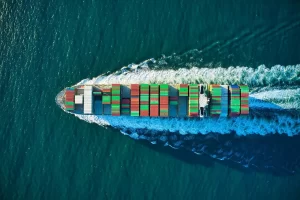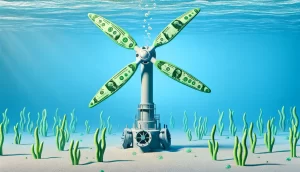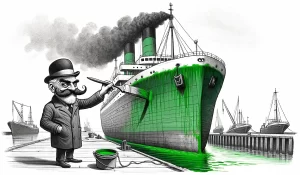When most people think about wave energy, they automatically associate it with the grid, or the regional network of wires that connect electrical energy producers to consumers. In reality, it’s capable of so much more. Below are eight real-world examples where wave energy is being used to provide useful energy for non-grid applications.
The examples I highlight here are just a small subset of all the different organizations that are using wave energy in innovative ways and this article should not serve as an endorsement of them or their technology. With that caveat out of the way, continue reading to learn about some of the different ways to use wave energy.
In-Situ Energy
Electrical energy produced from ocean waves doesn’t have to go back to shore to be used, sometimes there are electrical loads in the very same place where the energy is being harvested. Think of them as nanogrids at sea. This idea of producing energy where you need it is often referred to as in-situ power generation and is very appealing to many offshore sectors that need energy at sea, but don’t want to pay for expensive cabling from shore or ship.
Consider a weather buoy used for ocean observing. Such a platform may have a couple dozen sensors or instruments on board measuring everything from wind speed to wave heights, but all these sensors need power. Marine energy devices harvest energy from the very environment that ocean monitoring equipment measures; a natural pairing.
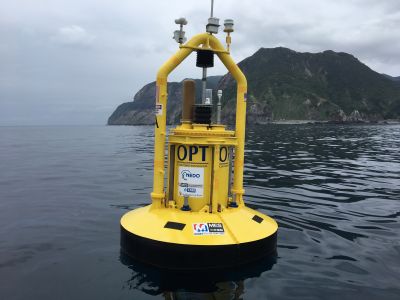
Ocean Power Technologies, a US company, makes a point absorber type wave energy converter designed for just such ocean monitoring applications. Their system, the PB3, is a surface buoy that converts the up-and-down motion of waves into electrical energy to power on-board instruments and equipment while also providing real time communications back to shore. This particular system was just recently demonstrated in the North Sea while providing power to observing equipment during the decommissioning of an oil rig.
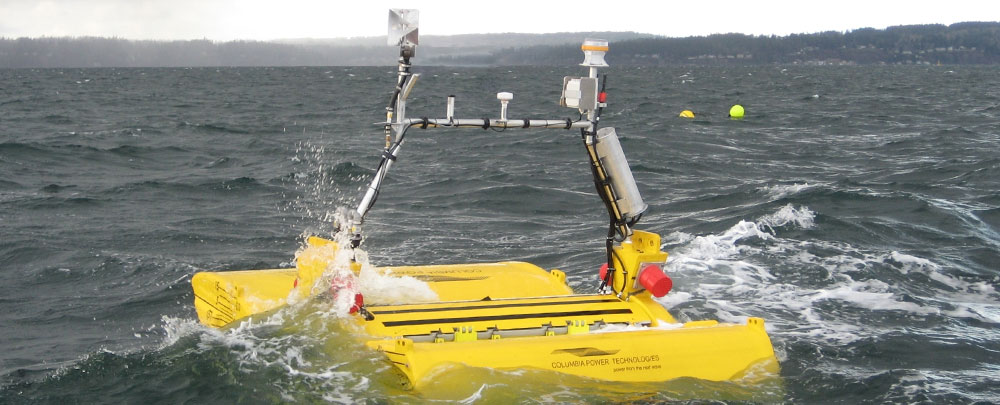
Ocean observing involves many different types of platforms and technologies, including unmanned underwater vehicles. These platforms have revolutionized data collection at sea, but they are limited in range and duration by their batteries. Once the batteries are depleted, they need to be recharged which often requires a vessel and crew. C-Power, a US wave energy company, is working on building a point absorber type wave energy converter called the EagleRay that will serve as a recharge station to replenish batteries while the vehicle is at sea, allowing them to stay out at sea longer and collect more data.
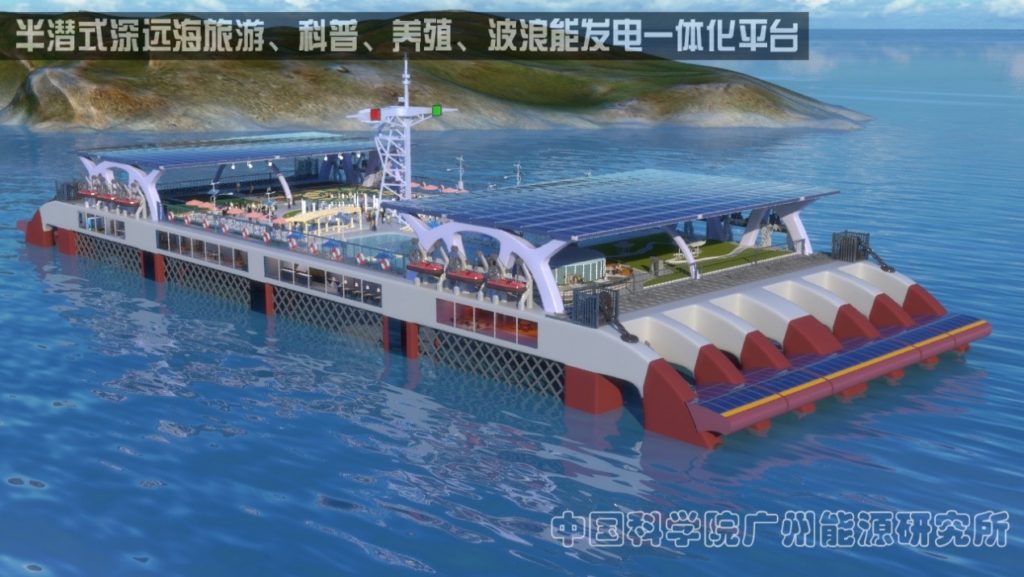
Offshore aquaculture also needs in-situ energy. Electricity is used for a variety of purposes in an offshore aquaculture facility, from dispersing feed in the pens to powering underwater vehicles for inspections. As aquaculture facilities move further from the coast to take advantage of economies of scale and less resource conflicts, they are encountering logistical difficulties in provisioning energy and surviving the rough environment. Wave energy devices have the unique benefit of providing power while simultaneously attenuating waves. In China, a project is underway which integrates the wave energy converter directly into the aquaculture facility’s design to take advantage of these co-location benefits.
Pumping
Moving a fluid such as water requires a pump, and a pump usually requires an electric motor. But what if you could replace the motor of the pump with something that didn’t need electricity? Wave energy can help.
Resolute Marine Energy is one of several companies that is focused on using ocean waves to pump seawater. In basic terms, their design is essentially a large flap that oscillates back and forth in the waves. This oscillatory movement of the flap actuates a pump which delivers high-pressure seawater to a reverse osmosis membrane where it is converted into freshwater.
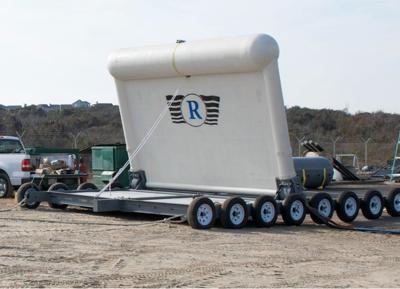
Ocean wave pumping of seawater can be used for a variety of other applications as well, from industrial cooling to salt water air conditioning. One company, Atmocean, even thinks it could be used for sequestering carbon dioxide in the deep sea. Their idea is to use their ocean wave driven pump to move surface water with high concentrations of dissolved carbon dioxide into the deep sea where it is locked away from the atmosphere, increasing the rate of ocean absorption of carbon dioxide from the air. This accelerates a naturally occurring process, but as the company is quick to note this isn’t a solution for climate change, it just buys valuable time. You can read more on deep sea storage of carbon dioxide here.
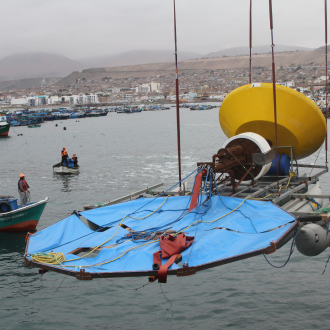
Propulsion
Crossing oceans requires an energy source such as wind, coal, or fuel oil. Unmanned vehicles that attempt such journeys can’t rely on fuels however because they simply can’t carry of the stuff with them. Instead, they harvest energy from wind, waves, and sun as they go. All long-endurance unmanned surface vehicles rely on at least one of these for power and propulsion.
An example of a wave-powered unmanned surface vehicle is the Wave Glider, built by Liquid Robotics. The Wave Glider is composed of a surface buoy and weighted glider connected together with a length of cable. The coupled system bobs up and down when it encounters ocean waves, but instead of going straight up and down, the weighted glider deflects the vertical motion into lateral motion, which propels the vehicle forward. This vehicle was one of the first long-endurance unmanned vehicles to hit the market and has totally revolutionized how we collect data at sea.

An altogether different form of wave-driven propulsion is the WireWalker, built by Del Mar Oceanographic. The WireWalker is a float that clamps onto a weighted, vertical stretch of cable with the surface-end fastened to a buoy. As the surface buoy and attached cable travel upwards on a wave, the WireWalker rides along the cable by grabbing it with an internal cam-lock as it descends. At the bottom of the cable the WireWalker releases the cam-lock and rides all the way back to the surface for the next cycle. In this way the WireWalker float moves up and down in the water column and can collect data at different depths, what oceanographers call profiling.

Wave energy can scale-up to larger modes of transport too. In Europe a company by the name of WaveFoil is currently demonstrating wave energy technology on a passenger ferry. It’s old knowledge that vessels with wings – or foils – at the bow can be partly or solely propelled by wave energy. The foils generate lift when the vessel is moving up and down in waves, and the lift has a small amount of forward thrust that is larger than the drag of the wing which provides propulsive force. The UK company Autonaut employs this technique in their unmanned surface vehicle, but WaveFoil has scaled up this idea so that it works on larger vessels in a compact and retractable design. By using wave energy, these underwater wings allow the vessel to reduce fuel use by as much as 20 percent according to the company.
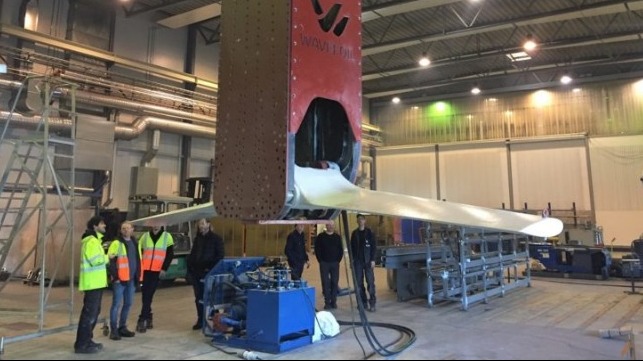
These are eight real-world examples of how wave energy can be used for applications other than powering the electrical grid, but new ideas are emerging constantly. In fact, the US Department of Energy is helping encourage such innovation through two separate prize competitions: the $2.5M Waves to Water Prize and the $3M Ocean Observing Prize. So the next time someone mentions wave energy, remember that there is more to it than just powering the grid.

